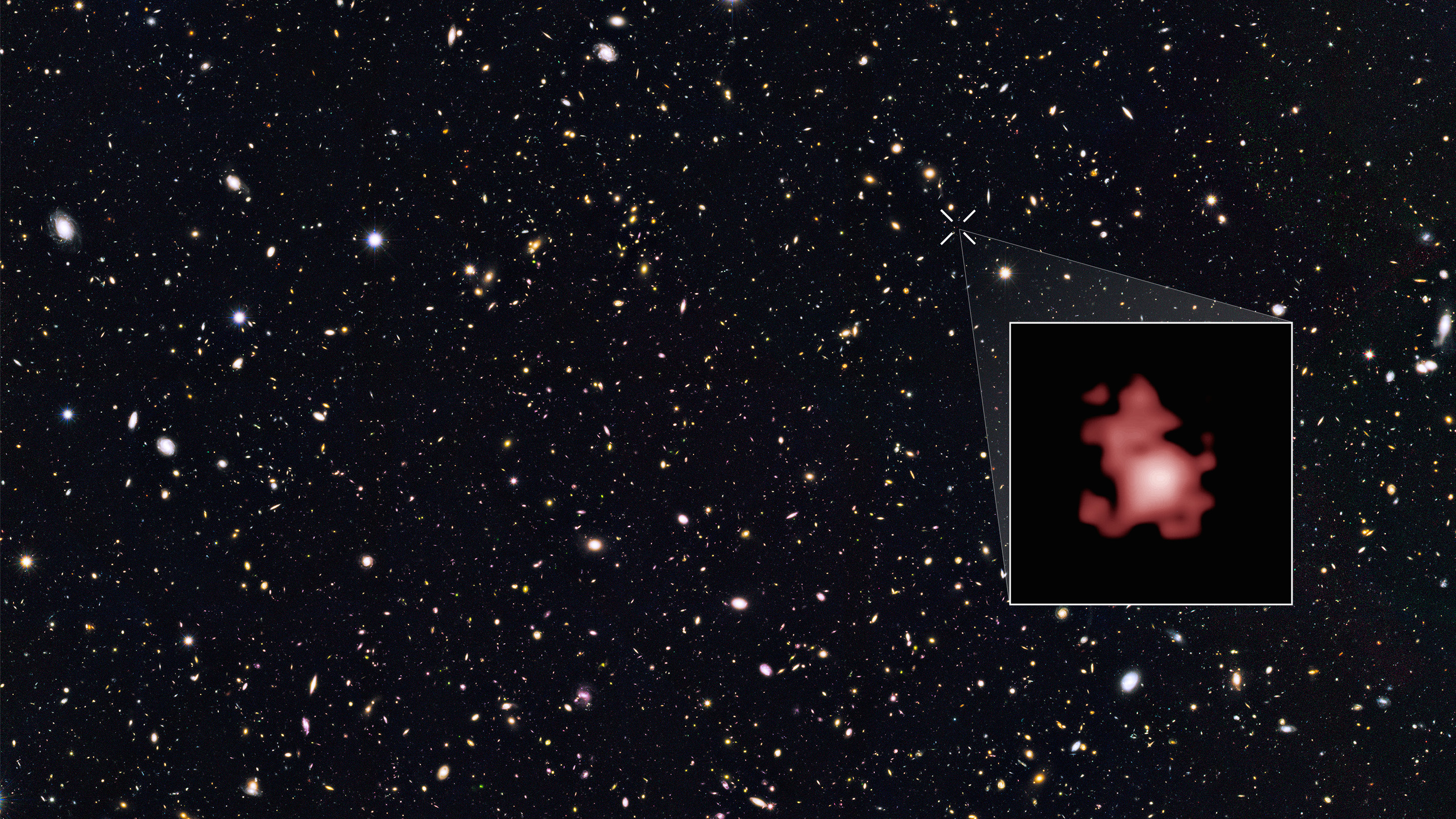Long distance relationship: Hubble spots the furthest galaxy ever seen
13.4 billion light years away

The Hubble Telescope has spotted the furthest galaxy ever seen.
Using the Hubble's Wide Field Camera 3, a team from Yale University, the Space Telescope Science Institute (STScI) and the University of California have now measured precisely the distance of GN-z11, placing it at a record-breaking 13.4 billion light years away.
This puts it nearly 200 million years closer to the Big Bang than originally thought, as we are now seeing it at about 400 million years old.
The team used spectroscopic observations, splitting the light into its component colors to determine and measure the "redshift" of a galaxy (which is why the image above looks like a reddish-pink blob). This redshift occurs because of the expansion of the universe, creating longer, redder wavelengths as a galaxy travels from the expansion.
"Our spectroscopic observations reveal the galaxy to be even farther away than we had originally thought, right at the distance limit of what Hubble can observe," Gabriel Brammer of STScI said.
Principal investigator Pascal Oesch of Yale explained that the discovery places us even closer to viewing the earliest forming galaxies, as we see the GN-z11 galaxy "at a time when the universe was only at 3% of its current age."
"We've taken a major step back in time, beyond what we'd ever expected to be able to do with Hubble," he said.
Sign up for breaking news, reviews, opinion, top tech deals, and more.
The discovery also offers a glimpse at what astronomers we'll be able to find after the more powerful James Webb Space Telescope launches in 2018 and the Wide Field Infrared Survey Telescope launches in 2024.
Both new telescopes are about 100 times more powerful than the Hubble and will work to search for distant galaxies as astronomers continue to look to when the first galaxies started forming.
The video below shows what region of the universe the young GN-z11 galaxy was found. As we see it today, it has only 1% of our galaxy's mass in stars and is 25 times smaller than the Milky Way. However, the team says it is forming stars at a rate about 20 times greater than our galaxy.
Top image credit: NASA, ESA, and STScI
